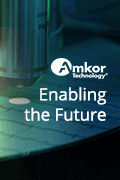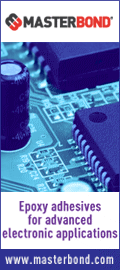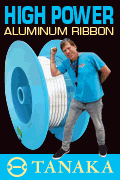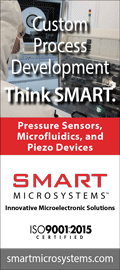 |
|||||||||||||||||||||||||||||||||
 |
|||||||||||||||||||||||||||||||||
 |
|||||||||||||||||||||||||||||||||
 |
 |
||||||||||||||||||||||||||||||||
 |
|||||||||||||||||||||||||||||||||
 |
 |
||||||||||||||||||||||||||||||||
 |
|||||||||||||||||||||||||||||||||
 |
 |
||||||||||||||||||||||||||||||||
 |
|||||||||||||||||||||||||||||||||
 |
 |
||||||||||||||||||||||||||||||||
 |
|||||||||||||||||||||||||||||||||
Morning Keynote
You Say Tomatoes, I Say Sensors
Rob O’Reilly, Senior Technologist, Automation, Energy and Sensors Group, Analog Devices, Inc.
This talk will provide a description of the “IoTomatoes” effort conceived by Experience Co-Creation Partnership (ECCP), Analog Devices Inc. and the MEMS and Sensors Industry Group (MSIG). In addressing the four pillars of earth (Air, Water, Health and Energy), MSIG hosted an event where the keynote speaker (Francis Gouillart of ECCP) "challenged" the MEMS component suppliers, "Why isn't the sensor industry more focused on providing global solutions to help with clean energy, hunger, health, or clean water?". The project entails working with local farmers, chefs and supermarkets to better define the problem and identify areas where MEMS and technology could benefit the growing process. ADI created a reference design that utilizes an ultra-low power approach for a battery operated edge mote connected to the cloud. The focus isn’t just on productivity, yield or margin optimization, but equally on taste. Data, analytics, predictive algorithms, work flows and harvest schedules all benefit from a small amount of environmental and physical data. Saving tomatoes from a certain ketchup or pasta sauce death requires farmers to understand the quality/chemistry of the tomato and in turn convince the distributors that the tomato meets a certain quality standard. An overview/update of the IoTomato project reference platform, gateway approaches and cloud service including the path towards reconciling productivity and taste will be presented.
For more information on the IoTomatoes project please click here.
Afternoon Keynote
End-point Security in IoT from the Perspective of End-to-End Security
Flavio Bonomi, Ph.D., Founder and CEO, Nebbiolo Technologies
The success of the Internet of Things will be predicated, to a large extent, on the evolution and deployment of a horizontal networking, computing, storage and services platform, supporting and enabling multiple vertical applications and use cases. Key elements of this platform will be a widely distributed and networked set of computing and storage resources, manifesting as Cloud, Fog, and Endpoint resources.
Fog Computing extends the Cloud Computing paradigm to the edge of the network, thus enabling a new breed of applications and services. It will also provide rich resources complementing both the Cloud and the embedded Endpoints in functionality dimensions such as authentication, security and privacy, storage, data management and analytics, and application support.
The ultimate applications, solving useful use cases for various verticals, will be distributed, and use resources across the path between Endpoints and Clouds, and will often share the common underlying infrastructure.
This distribution of resources will enable the optimization of where certain functions will be performed, and this task distribution will depend on the physical, cost, energy, latency, reliability constraints characterizing each end to end application.
Within this architectural perspective, the hardware design of Endpoints, and the software functionality associated to Endpoints, should be defined with close consideration of the overall end to end architecture, and of the end to end applications the end point will support.
In particular, security is a fundamental end to end attribute of the future IoT platform. The support of Security has to be defined and implemented as an end to end function.
In this keynote we will discuss IoT security in this broader, distributed perspective, and focus on the role of the Endpoints in the support of this critical end to end attribute, presenting a number of innovative technologies which may contribute to the overall security of IoT solutions.
Closing Keynote
Building the Future: NextFlex's Collaborative Environment for Building the Flexible Hybrid Electronics Ecosystem
Malcolm J. Thompson, PhD, Chief Technology Advisor, FlexTech Alliance and CEO, Nano-Bio Manufacturing Consortium (NBMC), Director of Commercialization, NextFlex
Flexible Hybrid Electronics (FHE) products are growing dramatically over an incredibly diverse range of applications, such as medical patches continuously monitoring chronically ill patients, soldiers in combat, firefighters, pilots, and premature babies, as well as structural health monitors, soft robotics, prosthetics, and more. The technology and processes are reaching advanced levels of maturity. The biggest challenge going forward is advancing the manufacturing readiness of these materials and processes. This presentation describes the status of NextFlex and how it is developing the FHE manufacturing ecosystem through collaboration among companies, academic institutions, nonprofits, and state and local governments.
General Session
Listed alphabetically by last name
Optimizing Device, Packaging, Test: The Art of Fast Tracking a Design to Production
Matt Apanius, Managing Director, SMART Microsystems Ltd.
The exploding new demands for MEMS sensors are resulting in new applications that are emerging every day. Organizations that intend to exploit this market potential will need to mobilize their program quickly and execute it without making mistakes. This presentation will discuss how companies who do not necessarily have internal know-how can gain the knowledge to get the job done properly. Process technologies and solutions, when addressed early on, can ensure successful integration of design, packaging and testing of MEMS sensors.
MEMS sensors require microelectronics packaging. This is a critical part of the manufacturing process that has to be developed and, without careful consideration, can create cost over-runs that can kill a program before it gets completed. Additionally there tends to be at least one element of the design that requires a custom manufacturing process. Therefore any and all of the custom design elements need to be quickly evaluated and understood.
Innovative product development strategies can be used to avoid the pitfalls of traditional methods. 1) A “test early, test often” approach to product development creates quicker learning so that more design iterations can be done in less time. This shortens the overall design cycle. 2) Concurrent engineering, where design efforts are coupled with process expertise, reduces the cost of product development. This can be leveraged during scale-up in order to optimize tooling and equipment utilization without excessive cost.
Launching a new MEMS sensor product is expensive and risky. Process expertise in microelectronic packaging is a “must have” requirement for success. This presentation will highlight some examples of this new approach in a case study where the first prototypes were built in 90 days and put on test with zero failures. These examples will feature key learning, best known methods, and a call to action. The lowest overall development time and cost is a necessity for any organization.
Standardization of Packaging for the Internet of Things
Adrian Arcedera, VP MEMS/Sensors, Amkor Technology
The basic building blocks for the Internet of Things have been around for more than two decades. Connectivity, memory, microprocessors and microcontrollers have all benefited from using standard IC packaging platforms, except for MEMS Sensor/Devices. MEMS devices are not standard integrated circuits. The creative wafer fabrication techniques gave birth to Si-based transducers and actuators that respond to or interact with external or environmental stimulus. At the onset of MEMS packaging, cost and package form were not primary considerations in solving end market applications. This created a broad variety of package form factors for almost every application and end market.
As the IoT market grows and transitions into high volume production, the drive towards sensor fusion, integration and IoT module assembly will become more critical. Assembly packaging and test standardization will be needed to offer cost competitive solutions without sacrificing performance. Among all of the devices necessary for the IoT to be successful, none is more “sensitive” than the MEMS/Sensor device. The requirement of “controlling stress to the MEMS structure, while allowing stimulus to pass through” remains the same whether the packaging solution is a discrete package like MicroLeadFrame® (MLF®), a Land Grid Array (LGA) or an IoT module.
A standard platform will open opportunities to combine MEMS/Sensor devices with microcontrollers, memory and connectivity at the package level instead of at the silicon level. The resulting IoT/Sensor module can be delivered with a shorter design to manufacturing cycle time, smaller footprint and lower packaging cost than the current discrete packaging solutions. Additionally, the standard platform provides the necessary flexibility and customization to support multi-MEMS/Sensors on the inside, while keeping a standard footprint outside to maintain maximum compatibility during assembly, final test and surface board mount.
The discrete MEMS/Sensor devices are aligning to standard packaging platforms, and the same action needs to happen in the IoT/Sensor module in order to achieved successful commercialization. What will you integrate in your IoT module? Will you need a shield or an antenna or both? These questions and more will be addressed during this presentation.
From Standard Processes (MUMPs® - Multi-User MEMS Processes) to Commercial Success
Allen Cowen, MUMPs Program Lead, Test Department Manager, MEMSCAP Corporation
Since 2003, MEMSCAP has offered four unique integrated MEMS standard processes in PolyMUMPs, SOIMUMPs, PiezoMUMPs and MetalMUMPs, the only MEMS company in the world who can boast such a variety of low-cost MPW services and easy, fast, and an inexpensive pathway to volume production. MUMPs has delivered over hundreds of thousands of devices to different user groups from the academic, commercial and government sectors worldwide. Results from these devices have provided detailed proof-of-concept data for use in graduate theses, published conference papers and, most importantly, advanced commercial product development. Results from these devices have provided detailed proof-of-concept data for use in graduate theses, published conference papers and, most importantly, advanced commercial product development.
Sensing System Symbiosis
Peter G. Hartwell, Ph.D., Senior Director of Advanced Technology, InvenSense
The MEMS industry has experienced tremendous growth in the past 5 years, driven primarily by the inclusion of motion tracking devices, among a variety of MEMS-based sensors, in smart phones and other consumer electronic devices. Growth is expected to accelerate as Internet of Things (IoT) devices proliferate enabling the cloud to connect with, and sense, the ambient world in order to make intelligent real time decisions. The IoT promises a new economy built on services created by analyzing the data collected from up to 1 trillion smart, sensing “things”. An inherent assumption is that because silicon integrated circuits are small, low cost, power efficient, and reliable, MEMS sensors can be the same – after all MEMS are built from the same materials and processes in the same factories. But a mechanical transducer must interact with the physical world it is sensing and it is this simple principle that forces a significantly different approach to creating reliable systems. The system developer must deliver “things” with compelling features as payment to the owner for taking it to interesting locations to be sensed, keeping it powered, and ensuring its connectivity to the cloud. And those who intend to profit from the new economy must realize that unless those rewards are returned to the roots of the data, to the system and component creators, innovation will stop and technology will plateau preventing the true potential of the IoT from being realized. The internet of things, poised to be the next layer on the internet, must be a symbiotic system created to benefit all whom it touches, from the supply chain, to the users, to the financiers, to the very planet that it covers.
Fan-Out Wafer Level Packaging Enables MEMS and Sensors to Meet Future IoT Requirements
Babak Jamshidi, Ph.D., Deputy Director, STATS ChipPAC
The semiconductor industry has an essential role in realizing the promise of a global network of people and devices connected through Internet of Things (IoT). Micro-Electro-Mechanical Systems (MEMS) and sensors devices, which enable the “Thing” sub-segment of IoT, are expected to exceed in performance while remain cost competitive in the face of exponential volume growth. Packaging and silicon fabrication account for more than half of device cost and have a significant impact on footprint and performance.
In recent years, the scale and performance demanded by the mobile and handheld market have driven advanced packaging technologies to re-invent themselves to meet aggressive specifications while enabling cost reduction roadmaps. As a result, new trends in advanced packaging technologies are emerging to meet MEMS and sensors requirements for IoT, where incumbent technologies have been stretched thin.
Although a majority of MEMS and sensor devices will continue to be in mainstream leaded or laminate types of packages, the disruptive cost and footprint reduction offered by advanced technologies will be quite attractive. In this presentation, we will review fan-out wafer level packaging (FOWLP) and how it can enable additional values for IoT devices in the areas of cost reduction and signal integrity that are quite suitable for RF sensors. In addition, we will review how FOWLP can take miniaturization to the next level and offer footprint reduction for a two-chip sensor solution in IoT consumer applications.
Applications Specific Electronic Packaging (ASEP): Electronics Packaging Leveraging High Speed Continuous Manufacturing
Amrit Panda, Principal Engineer, Molex
The need to integrate higher functionality and integration into smaller packages continues to be driven by the addition of electronic components to every facet of our daily lives. This presentation introduces ASEP – Application Specific Electronics Packaging. ASEP is a continuous and flexible processing platform capable of integrating different substrates, functional devices, and features into an interconnected multi-layered, three dimensional packaged solution as defined by the final application.
This presentation will demonstrate a programmable LED module for automotive lighting with the drive electronics integrated into a connector. This light module uses 20 fewer process steps, and has the associated benefits of better component integration, ease of design and lower costs. Continuous manufacturing methods provide cost, and high volume manufacturing advantages from the outset. Key process technology nodes and custom design elements can be introduced into existing high reliability manufacturing flows. This mitigates risk by being able to focus on a few key challenges instead of an all new process flow and minimizes capital outlay constraints.
ASEP aims to address issues such as thermal management, current requirements, shielding, for wireless power, sensors, MEMS, LEDs and other active/passive devices in a single unified solution. Process expertise is not just a desirable attribute at the design stage – it is a requirement for successful product introduction. Designing and developing electronic solutions requires vision, and an innovative product development strategy. Our strategy is to concurrently design both product and process to best leverage existing manufacturing methods to shorten the time to market.
Testing Approaches for Characterization and Selection of MEMS Inertial Sensors
Dino Smajlovic, Business Development Manager, Acutronic
Since 2007, the year first iPhone was released, we have seen an ever increasing utilization of the MEMS sensors in all kinds of smart devices. Over time, the MEMS technology advancement allowed for utilization of the MEMS sensors for several different roles, including inertial, pressure, humidity, and temperature sensing, as well as audio and video applications. At the same time, the complexity of the sensors has gone up as well, in particular with the inertial MEMS sensors. From the single axis accelerometers and gyroscopes through sensor triads in a single chip, to “combo” sensors with 6 or 9 degrees of freedom (including 3-axis accelerometers, gyroscopes and magnetometers), today’s integrator is faced with many choices, in price, size, performance, energy utilization and packaging. Adding to that a large number of manufacturers of the inertial MEMS sensors it becomes obvious selection process is more complicated than ever before.
While some of the characteristics of the sensors are easily compared (price, size, number of axes, etc.), performance parameters are typically only partially defined by the manufacturers, and can vary greatly from one to another and over different environments.
Because the expected use of the products with the embedded inertial sensors (smartphones, wearables, smart helmets, VR sets, etc.) can vary greatly the best approach to select MEMS inertial sensors is by conducting characterization tests for a defined set of parameters.
In this presentation we are describing the process of testing inertial MEMS sensors (accelerometers and gyroscopes), selection of the parameters and choosing test procedures to collect relevant data. Once the data is collected and the product application is considered selection of the appropriate sensors can be made.
To illustrate these steps we will present a comparison of the 3-axis gyroscopes ACUTRONIC has conducted in our iTS Lab located in Pittsburgh, PA. The tests were performed over the temperature, to fully characterize performance of the sensors, and parameter definitions were based on the IEEE 2700 Standard for Sensor Performance Parameter Definitions by the IEEE Standards Association.
Advanced WLP Platform for High Performance MEMS
Dean Spicer, Director of Engineering, Micralyne
High performance inertial sensors often require expensive packaging materials to achieve a resonator with high quality factor. To reduce environmental damping, the MEMS die must be hermetically sealed under vacuum using a ceramic package. A discrete getter is often added to ensure the reliability of the device over its lifetime. Presented here is an advanced wafer level packaging platform that utilizes an integrated thin film getter and hermetic wafer bond to eliminate the need for costly packaging materials and die level processing, while significantly reducing the size of the final component. The process platform also includes through silicon vias, enabling electrical connections to the hermetically sealed device and wafer level placement of a lead-free solder BGA (ball grid array). The end result is a high performance MEMS die that is ready for direct bonding once singulated.
High Volume MEMS Testing; Evolution,
Challenges and the Future
Mårten Vrånes, Director, Consulting Services MEMS Journal, Inc.
High volume MEMS testing, including calibration and verification of sensor functions, has long been considered costly, complex and a major barrier to scale. A paradigm shift was needed to cost efficiently test increasing volumes of lower-cost MEMS devices. The rapid adoption and commoditization of sensors in consumer electronics, and in particular smartphones, has driven major innovations in MEMS production test equipment and technology. Some are subtle, like finding the appropriate clamping force for motion sensors to avoid biasing the calibration as a function of exerted mechanical stress. Others have been more obvious, like increasing parallelism in the form of additional test sites. Many of these advancements were developed by leading MEMS component providers in close collaboration with test automation companies. After a period of exclusivity for leading customers, new test solutions are being released to the general market. There are now readily available systems for high-volume testing of inertial sensors (accelerometer, gyroscope and magnetometer), environmental sensors (pressure, humidity and ambient light), audio sensors (microphones) and combo-solutions. Multiple vendors are providing competitive turnkey systems, either as a one-stop-shop or through partnerships. This presentation will discuss some of the key lessons learned during the evolution of MEMS testing, what the current challenges are and the implications of a futuristic trillion sensor market.




